
H E B E A

NAMES: A WALK THROUGH ANXIETY AND THE LOVE OF GOD by Abeni
Knowles
MONKEYING
AROUND: DEBATES ABOUT ORIGINS by Evan
Carr
CHAOS, CLIMBING, AND CLAYSTONE by Moriah
Stagg


H E B E A

NAMES: A WALK THROUGH ANXIETY AND THE LOVE OF GOD by Abeni
Knowles
MONKEYING
AROUND: DEBATES ABOUT ORIGINS by Evan
Carr
CHAOS, CLIMBING, AND CLAYSTONE by Moriah
Stagg
When we gaze at a beautiful sunset or look at the infinitely varied forms of life we find surrounding us and realize that God designed it all, it is easy to be impressed. God is an artist. The most brilliant, creative artist ever to exist.
But when we look at our own lives and consider what God is doing there, we tend to forget that God is an artist. He is making something beautiful out of you and your life. You may not see the beauty now -- you may not even see any design or evidence that God is working -- but you will recognize it someday.
God's intention for you is to be much more beautiful and glorious than a sunset or a school of multicoloured fish. And you will be! God will not fail.
Ephesians 2:10 NLT
“For we are God’s handiwork, created in Christ Jesus to do good works, which God prepared in advance for us to do.”

Editors: Malcolm Ohlhauser, Alley MacDonald

Beacon Writing Team: Evan Carr, Abeni Knowles, Suava Hoffman, Justin Reimer, Noah Rooney, Amy Dykeman, Moriah Stagg
Special thanks to the CSA
Credit to Moriah Stagg for photography and a devotion for preface
The Beacon staff reserve all rights to edit submissions for the purpose of producing quality, relevant, and tasteful content
To submit an article, or if you have any questions, please feel free to contact us at crandallbeacon@crandallu ca
All content is the property of The Beacon unless otherwise stated.

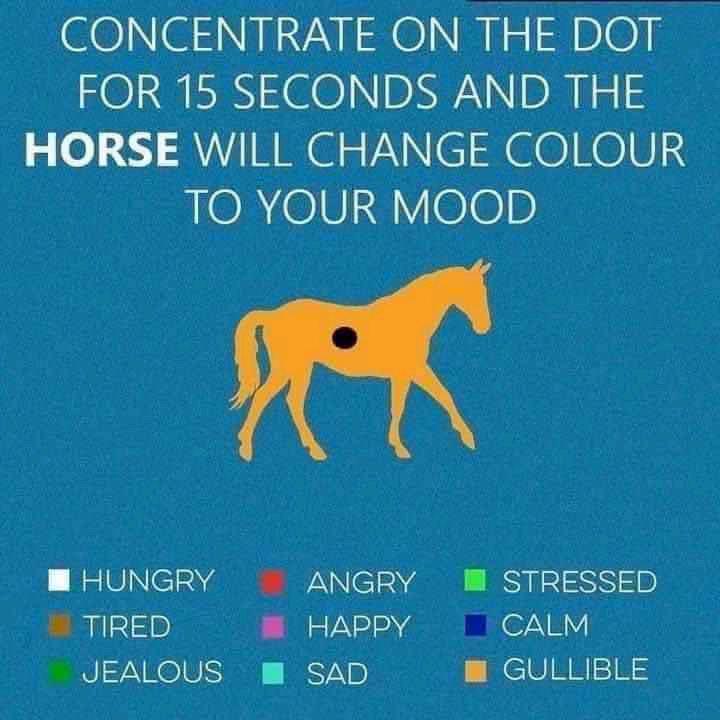

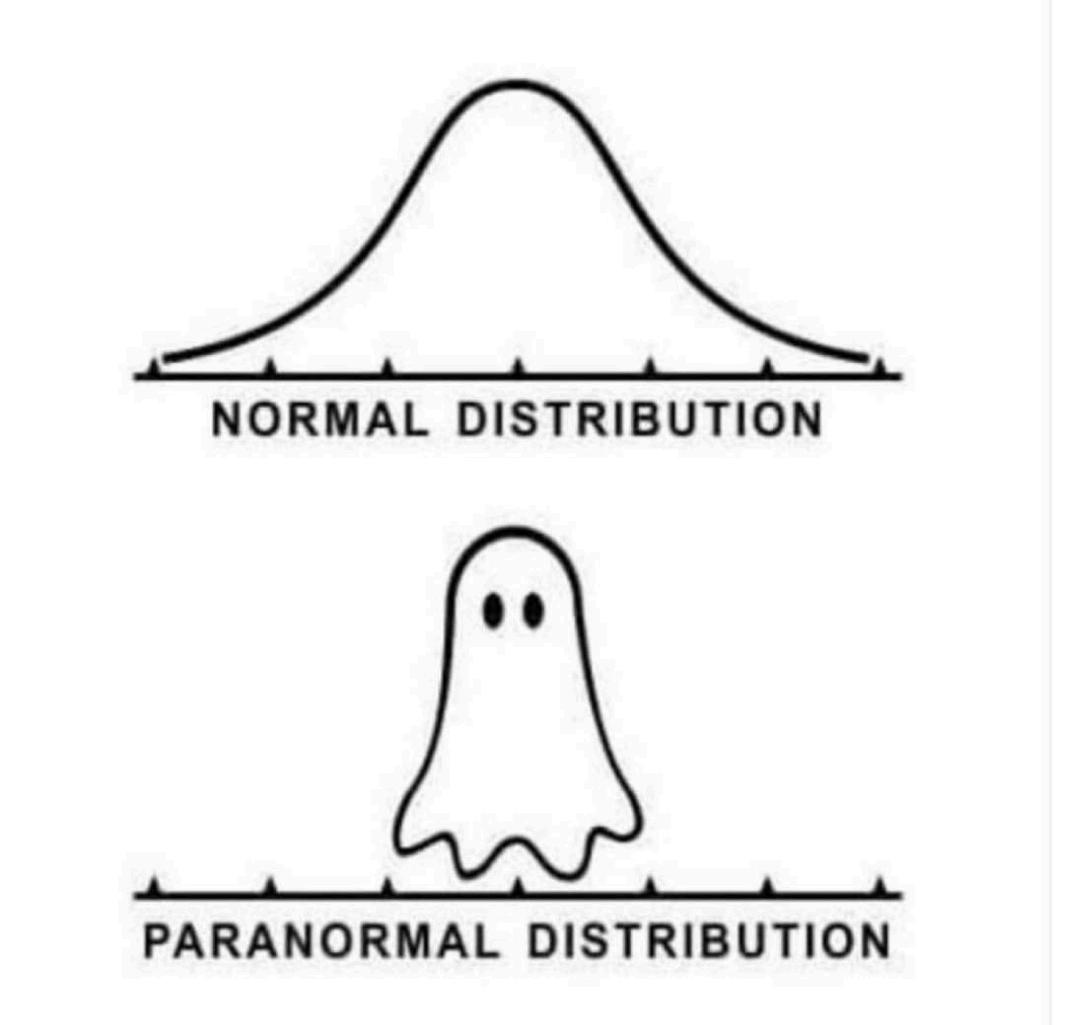
Would you like your society’s event included in the monthly schedule? Make sure to let us know by the last Thursday of each month!
By Amy Dykeman
If you were to ask me about my experience as an artist, my first thought wouldn’t be of the actual pieces I’ve created, despite being proud of the hours of effort it took to get to this point and my resulting skills.
As early as elementary and middle school, I was always the kid that doodled in the margin of their notes. I probably should have been paying attention in class, but attempting to replicate Pokémon designs from memory or creating entirely new ones was always so much more appealing. Of course, there were art classes in middle school, and I was lucky enough to have a great teacher. But sadly, no one among my peers seemed particularly passionate about the subject.
It took until grade nine for me to take art from an occasional pastime to a journey. I totally invested myself in obtaining new skills and making my art something I could be proud of. The only issue I ran into was the specificity of my interests.
Pokémon is universal enough, but I began to discover new games, series, and topics to inspire me, although for some time, I had no one to share my works with.
Eventually, I took to posting my doodles on social media platforms. It was through the senseless maze of hashtags and algorithms that I finally found others with similar interests.

Prior to this, I did not have much experience with online connections, so when I was invited to join a group for sharing art, I was hesitant to do so. Upon eventually joining, I found that we were all united through shared passions which allowed us to develop proper friendships easily. Soon enough, a group was formed with new people popping in semi-frequently, and our bonds solidified even further through art-related discussions and challenges.


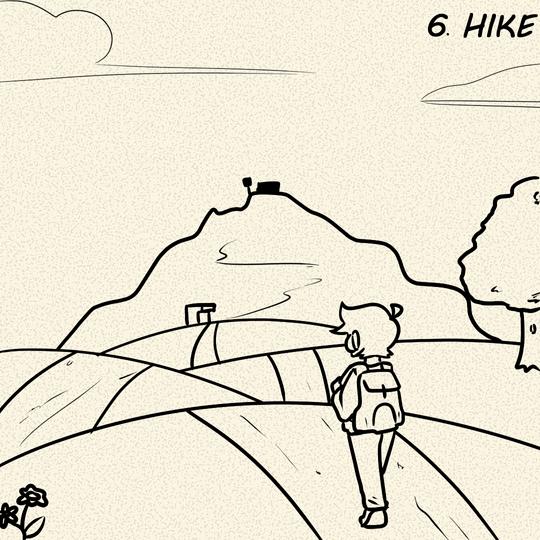



by Riley Palmer
As the high school art classes were replaced with sciences, these friends kept encouraging me on my journey of artistic improvement through constructive criticism, challenges, and compliments. We created a safe place to share our art in our own little community.
When the world shut down in March 2020 and I graduated from high school months later, art kept me as sane as anyone could be during this time. My online art community became my sole source of social interaction outside my family.
Sometimes indulging in my interests would make me feel guilty, as this was time I could have been putting towards figuring out that equation or memorizing more chemical compounds. Despite my internal struggles, looking back, I don’t regret a single minute. Even if I had devoted myself entirely to my studies, I would have been miserable without an emotional outlet and the support system that had eventually blossomed among many fellow artists.
When I think of my time as an artist, I first think of all the connections I’ve made. I think of categorizing my closest friends' birthdays and pouring my soul into drawing something that would bring them joy.
I remember the joys of discovering Art Fight, a month-long online competition where you win points for your team by drawing characters from members of the opposing team. I think of all the collaborative pieces I contributed to alongside many other talented artists inspired by a theme, fandom, or character. I remember seeing my friend create a fan-made visual novel and being inspired to create my own, then connecting with others working on similar projects.
Even when I began my time at Crandall last year, I met some of my closest friends through a shared artistic interest. One of my fondest memories is ending one of my first days of classes chatting about worldbuilding and fanart with a classmate.
At the end of the day, maybe the real art was the friends I made along the way.
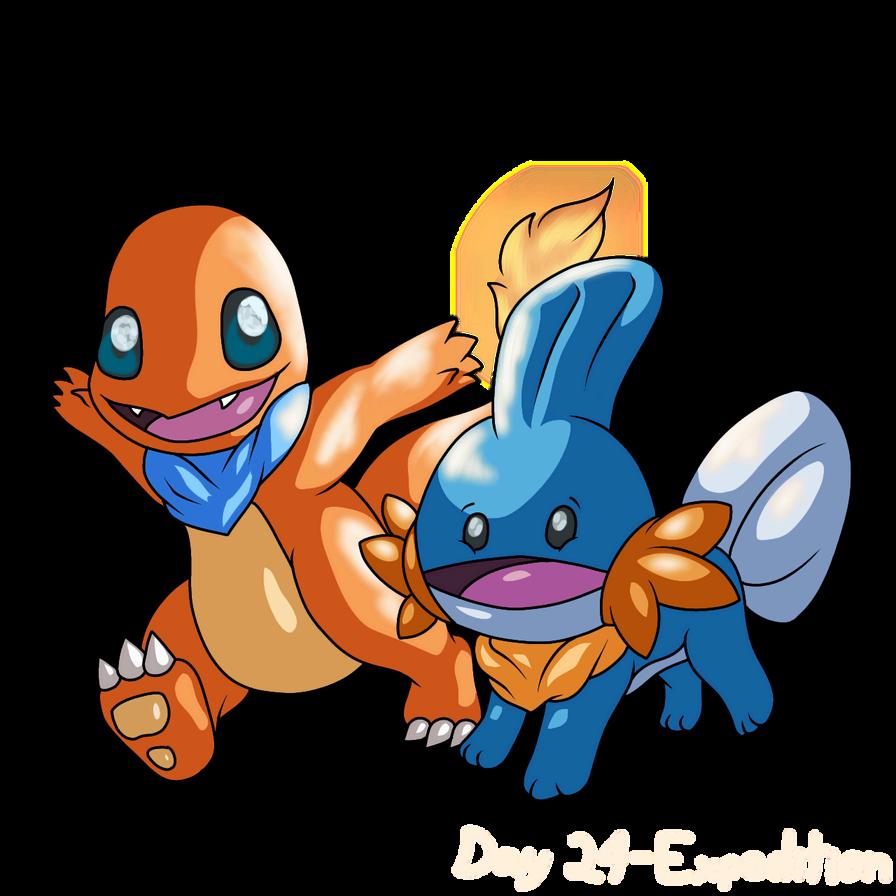
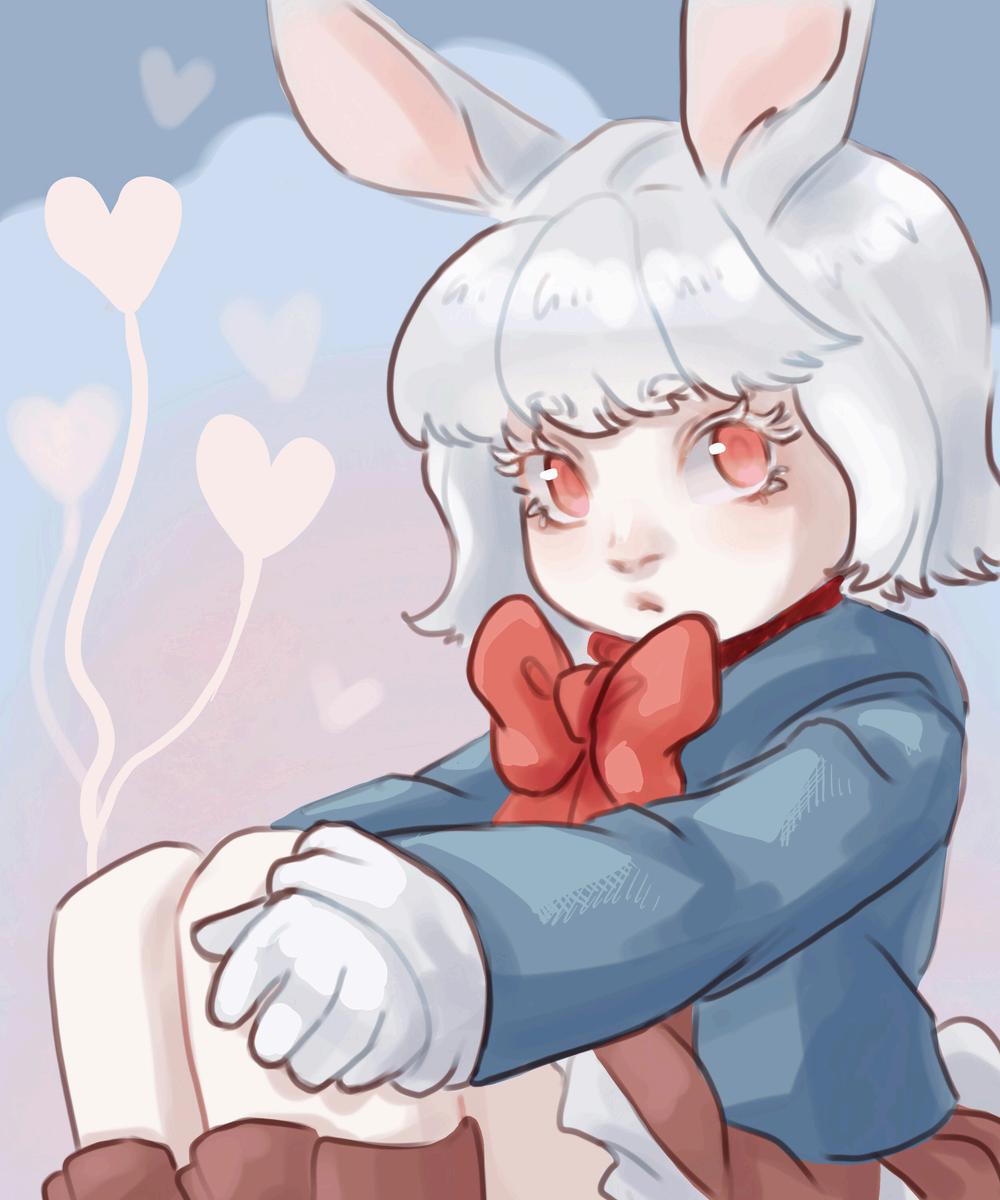

By Abeni Knowles
Who will separate us from the love of Christ? Will tribulation, or trouble, or persecution, or famine, or nakedness, or danger, or sword? Just as it is written:
“For Your sake we are killed all day long; We were regarded as sheep to be slaughtered.”
But in all these things we overwhelmingly conquer through Him who loved us. For I am convinced that neither death, nor life, nor angels, nor principalities, nor things present, nor things to come, nor powers, nor height, nor depth, nor any other created thing will be able to separate us from the love of God that is in Christ Jesus our Lord
Romans 8:35-39 NASB
This past week, I had the privilege of being able to speak in Chapel about my personal walk through Anxiety Disorders. Keeping in theme with Mental Health Week, the focus on art for this month’s issue, and the overarching theme in Chapel of trusting God more completely, it felt like everything was aligning for me to talk about this.
My journey began in one moment, when I was online and saw a post berating women in ministry. To me, who had thought for years that God was calling me into ministry, this sparked a raging fire in my head and heart. I began to develop thoughts that I was not walking in God’s will, and that I was rebellious and wicked. I did not know if God had forsaken me or if I was His enemy. It was a quick and harrowing cascade that led me to stop trying to please this loveless God at all.
A year had passed of running from The Lord. He hated me anyway, so why try to face Him? I wouldn’t go to Him, so He came to me. I had become chronically ill and needed to believe that God was calling me to Himself once again. But being back with the Lord meant that my anxiety was back with me.
I developed compulsions that accompanied me at all times. I’d repeat a prayer until I said it perfectly. My intrusive thoughts were beasts I had to control by removing myself from classes or conversations to focus on them until they died out. I found myself twitching, swearing, making gestures that would somehow satisfy the compulsion.
A few months into this struggle, I sketched my first piece of a few. Submit encapsulates everything I felt during this time. The long, drawn-out prayers that made ‘amen’ lose its meaning, and the fear that should I stop, the other shoe would drop. So God had me back, but how did He keep me? I’ll put it plainly: He had to teach me to trust Him with my own salvation, not myself.
Slowly but surely, I challenged my obsessions. I learned to sit in a stuttered prayer and not go back. I learned that He, knowing my humanity, has grace to help me live the life He has called me to. If I put faith in myself and what I can do with my own ability, I will fail and fall. But if I put my faith in Him, I will fly.
My message in Chapel, longer and more fleshed out, pivoted on the idea of Names. COVID-19, Generalized Anxiety Disorder, Significant Obsessive Compulsive Traits, Scrupulosity, Submit—these are the names that held power over me when they spoke my own. They held me close and, admittedly, still walk with me in some capacity today. Though they are my struggle, they are not my separation from the love of God.

There is a name I know, strong enough to bear the weight of my sin and patient enough to sit with me in my confusion.
There is a name I know, powerful enough to disrupt my thoughts and the death they bring.
There is a name I know, whose love made a way, a great escape from despair into Grace.

By Suava Hoffman
During the Crandall 75 celebrations in September, Dr. Bruce Fawcett announced that Colburne House will be undergoing renovations this summer. Following this exciting announcement, I sat down with Housing Manager Crystal Knowles to discuss the plans for this renovation.
Suava: So the word is out—Colburne will be renovated this summer! What are the plans for this renovation?
Crystal: This is going to be a massive refresh for Colburne. The building has been well used and needs a big facelift. From the outside, the building is going to look the same, but the inside will be very different.
We’ll keep the same layout, but we’re replacing everything—there will be all new flooring, lighting, and plumbing. The bathrooms will be completely redone. We are also replacing all of the furniture with new pieces. It’s going to feel brand new. Colburne House is the last of our big renovation projects.
Suava: That’s amazing. I’m sure the students will really appreciate that!
Crystal: The leadership at Crandall sees this as an incredible opportunity to bless the students who live on campus. It’s what we’ve needed, and I’m so excited that it’s happening.
Suava: When will the renovations take place?
Crystal: We have to do it all in the time between when students leave for the summer and when they return for the next year of school. On April 18th, when all the students leave, the team will come and start working. It’s going to take every minute of the summer to get it done for the students who are moving in next September.
Suava: So Colburne’s interior will be completely refreshed. Will the common areas have any changes?
Crystal: I suggested some changes to the common spaces, since we don’t have a lot of gathering space for the amount of people in the building. I think we can change the floor plan a little bit to eliminate wasted space and expand the common areas. I think everyone will be surprised when they walk into the building!
Suava: How will the process of renovating work?
Crystal: There will be a team who makes decisions, and they will work with the contractors to figure out what will be able to happen.
Suava: What are you most excited about? What do you think students should be excited about?
Crystal: Everything! I think the new bathrooms and flooring will be amazing. You can only do so many touch-ups until you feel the age, and now it’s going to be brand new. I’m really grateful that Crandall is doing well and is in a position to do a project of this magnitude. I want students to feel valued and seen.
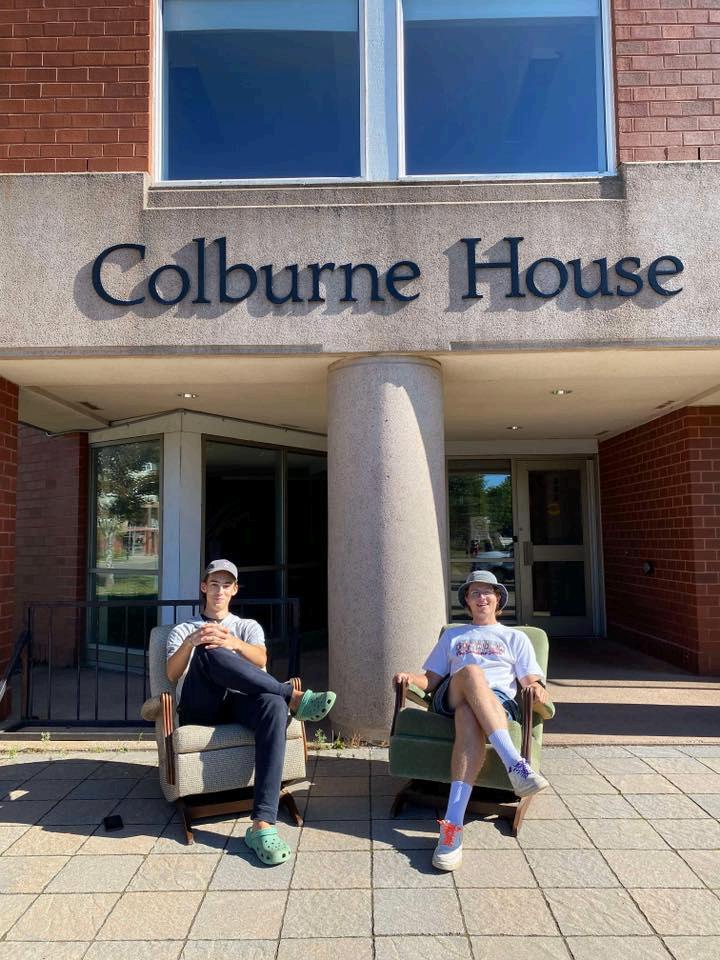
With the residences, staff and faculty don’t walk through, so it can be easy to forget. But people live there; it’s their home. I want students to come back every year and notice changes in response to their feedback, and I’m excited for them to come in next year and feel like they live in a beautiful place.
Suava: That’s great! I’m excited about the renovations—and I’m sure everyone else is!
Suava is a third-year sociology student who's a little jealous that this renovation is happening after she moved out of the dorms.
By Moriah Stagg
I am from Salmon Arm, British Columbia, and when I tell people that I’m from BC, most of them assume that I must have flown to get here. Nope! That would have been way too easy. Instead, I took my nearly thirty-year-old car and drove over 5,000 kilometers to come to Crandall.
Why? Because I love a good adventure.
I mention this because I think it is precisely what makes me fit in so well with the Claystone program. Even though my Claystone peers definitely still think I’m a little bit crazy for driving this whole way.
I usually get one of two reactions when I explain Claystone: I am either met with excited curiosity, or a blank stare and something along the lines of “that sounds miserable.” I personally think that packing my life into a 70L backpack and hiking 60 km along the Fundy Footpath is a perfectly good plan for my weekend. Trusting my classmate with my life while scaling a rock face? A little nerve-wracking, but worth it. Kayaking on the ocean? So much fun. Claystone isn’t everyone’s cup of tea, but if you like adventure like I do, maybe it is something worth considering. Come talk to one of us! I promise, we don’t bite.
Here are a few photos from our climbing trip, just to show you what you might be missing out on.
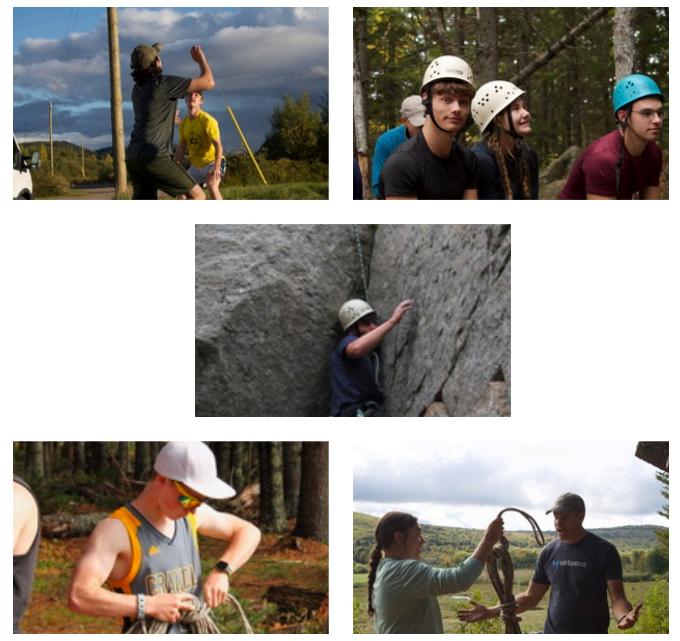

By Alley MacDonald
Before Charlie the Charger…there was Booster Monkey.
Growing up as the daughter of a Crandall alumnus, I heard lots of stories about life on campus in the late 1990s. But none intrigued me so much as the legend of Booster Monkey.
My mom recalls that during sports games, students at Atlantic Baptist University (ABU) could expect to see a monkey in a wig dancing across the soccer field or basketball court to boost the crowd’s energy and encourage the players. But who was this masked figure? What inspired him to take up the mantle of Booster Monkey? And why on earth was he a monkey?
Our investigative journalists at The Beacon plumbed the depths of our sources to find answers… also known as contacting Mike Peacock, a Crandall alumnus who we were told might have some useful information.
Mike started at Crandall—then ABU—in 1995, when the campus was still located on the Salisbury Road. There, he met an older student named Darren Stretch. Darren was known for donning a curly black wig for sports games and calling himself “Booster Boy” as he cheered on the teams.
In 1996, Darren decided to pass on the Booster Boy title and wig to Mike. Adding to the legacy, Mike tracked down a monkey mask and clown outfit and adopted the name Booster Monkey.
“I would go to different Crandall sporting events and dance around, cheering for our teams,” says Mike.

But Booster Monkey also had a heart for charity. Mike told us, “On Halloween I would dress up like the Booster Monkey and go door to door collecting food for the Moncton Food Bank.”
Mike remained Booster Monkey until 1999, when he officially hung up the mask. No Crandall student has taken up the mantle since. The role of Booster Monkey remains open for the next student to continue the legacy…
Alley MacDonald is a fourth-year history major whose vocabulary is mostly made up of Pride and Prejudice quotes.
By Evan Carr
Ratio Christi is starting a new topic this week regarding the origins debate. We will discuss the different interpretations of the Creation narrative in Genesis and how they connect with contemporary science. There are many views regarding the first few chapters of Genesis, and they can become a heated topic amongst Christians. Today I will present a few of the interpretations of the first few chapters of the opening book of Scripture.
First are proponents of the Concordist view, who believe in agreement between science and the Bible.
The Young Earth Creationist View (YEC) interprets Creation week as literal days. Consequently, the Earth cannot be billions of years old. They make various claims, both theologically and empirically, to support their stance. Theologically, they claim that there could not have been death and suffering prior to Adam and Eve because, according to the narrative, there was no sin and therefore no death at the beginning of creation – God called everything “very good” (Genesis 1:31). They also cite the notion of the first and second Adam and how the Fall in Genesis is the central plot in scripture that sets the stage for Jesus (1 Corinthians 15:21-23; Romans 5:12-21). They also refer to Romans 8, which discusses how Creation was subjected against its will to the curse of sin, demonstrating that death was not part of the original creation.
Empirically, adherents to YEC will cite geographical processes as evidence for a global flood, which supports the notion of a young earth shaped by cataclysmic events as opposed to uniformitarianism. They refer to fossilization, which requires rapid sedimentary processes. They will also point out past volcanic events that resulted in cataclysmic change and connect them to how a global flood could have done the same.
The following information comes from Evidence that Demands a Verdict (2017) and Biologos.com.
The other camp of interpretations is diverse, but they all share the belief that the Earth is old. They do not, however, all believe in Darwinian Evolution. This group of thought can be called Old-Earth Creationism (OEC).
For instance, there is the Gap view, which contends that Genesis 1:1 describes the creation of a perfect universe. This was followed by a gap possibly millions of years long where Satan was cast down to Earth and wreaked havoc, leaving the Earth in the formless and void state articulated in Genesis 1:2.
The Day-Age view, championed by Hugh Ross, argues that each day of creation was a finite period of time, but the “days” were long periods of time instead of a twenty-four-hour period, which is proposed by YECs. They state that the Hebrew word “yôm” has different meanings depending on the context, and one of those meanings can refer to a long but finite period. They also assert that the scale of activity of the sixth day requires more time than a 24-hour period and that the seventh day never ended, indicating a perpetual “day of rest.”
Proponents of Nonconcordist views do not attempt to find harmony between the Bible and current theories of origins. They also maintain that it is essential to understand the authorial intent and how the original Ancient Near East (ANE) audience would have interpreted the text. They argue that the narrative of Gensis 1 was to refute the polytheist ANE creation myths.
The Framework view is a major position in this worldview. The seven-day creation week is said to be figurative. There are two main triads of creation “week” (days one to three and days four to six). Triad one addresses the creation of three “kingdoms” – light on day one, sky and surface water on day two, and seas, dry land, and vegetation on day three. Triad two refers to the “kings” who rule the kingdoms: luminaries on day four, marine and winged creatures on day five, and land animals and humans on day six. They also argue that we are still living on day seven.
Theistic Evolutionists (proponents of Evolution from a Christian perspective) largely fall under the Nonconcordist position, and they believe that God is the driver of evolutionary processes. This results in a more figurative interpretation of Adam and Eve and the Garden of Eden. Some proponents of this school of thought, such as Robert Collins, contend that the Garden of Eden was a state that was never realized (it never existed), but it reflects what an ideal relation with God would be like. Adam and Eve represent all of humanity as well as the early hominids who had the capacity of free-will and self-consciousness.
The aforementioned views are all summaries, and entire books can be written on each of these views. My goal is to stimulate interest in the topic and to provide a brief, hyper-summarized overview.
If you want to learn more, come to Ratio Christi on Thursday nights at 6:00pm in SH 212! There are also many websites where you can read more: Creation.com and Answers in Genesis for YEC view, and Biologos for OEC and Theistic Evolution. You can also search Francis Collins, Hugh Ross, and Reasonable Faith for various OEC interpretations of Genesis 1-3.
McDowell, J & S. Evidence that Demands a Verdict: Life-Changing Truth for a Skeptical World. (2017). Harper Collins Publishers. Pp. 407-412. Davis, T. (2012). The Framework View: History and Beliefs. Biologos. Davis, T. (2012). Theistic Evolution: History and Beliefs. Biologos.
Evan Carr is a fourth-year biology major who sometimes prefers dessert first.

Miss Shaped by Elisha Reimer
When something is missing
Does that mean it’s gone? If something is out of view
Should I still hang on?
Is there still hope?
Will I wonder forever Drifting until I am withdrawn? When I wake each morn Will I care for dawn?
Can I bask for a moment?
They say life is a game Does that make me a pawn? My head knows the strategy But my heart lacks the brawn.
Is there a chance I will endure?
But everyone is a shape And I am an unclear polygon. All the shapes are building But I fall like Babylon.
by Moriah Stagg
Do I need a deep breath?
The grief I am feeling Was not voluntarily put upon. I did not seek this To experience a phenomenon
Will a nap calm my soul?
Each feeling so strong I could choose to ramble on Each word really feels Like an overbearing marathon.
Are you content to listen?
I know you aren’t magic You’re not an elf or leprechaun. Each moment with you Shows I’m no pylon.
Can I make it through this?
With you by my side I will try
